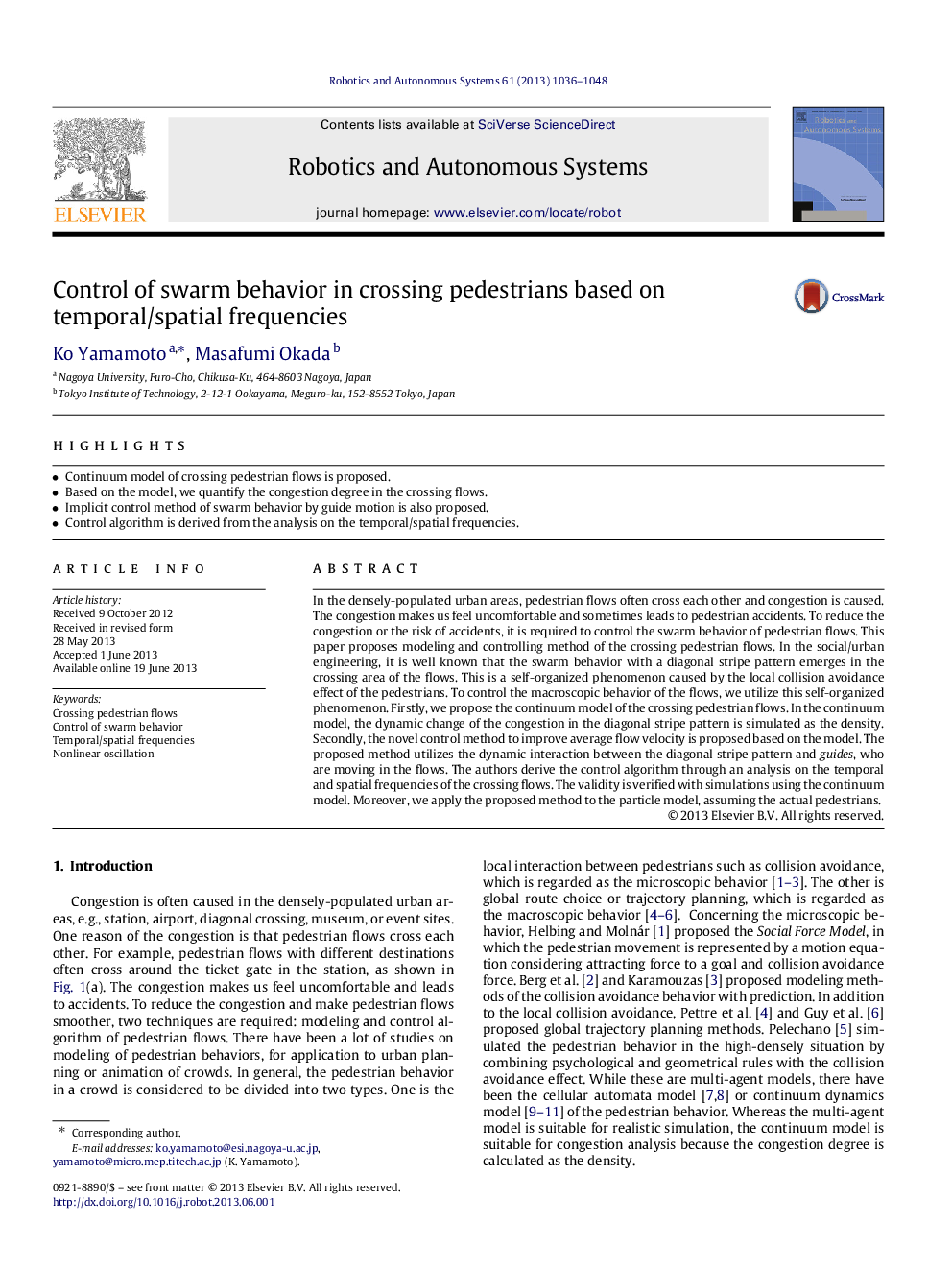| کد مقاله | کد نشریه | سال انتشار | مقاله انگلیسی | نسخه تمام متن |
|---|---|---|---|---|
| 413431 | 680503 | 2013 | 13 صفحه PDF | دانلود رایگان |

• Continuum model of crossing pedestrian flows is proposed.
• Based on the model, we quantify the congestion degree in the crossing flows.
• Implicit control method of swarm behavior by guide motion is also proposed.
• Control algorithm is derived from the analysis on the temporal/spatial frequencies.
In the densely-populated urban areas, pedestrian flows often cross each other and congestion is caused. The congestion makes us feel uncomfortable and sometimes leads to pedestrian accidents. To reduce the congestion or the risk of accidents, it is required to control the swarm behavior of pedestrian flows. This paper proposes modeling and controlling method of the crossing pedestrian flows. In the social/urban engineering, it is well known that the swarm behavior with a diagonal stripe pattern emerges in the crossing area of the flows. This is a self-organized phenomenon caused by the local collision avoidance effect of the pedestrians. To control the macroscopic behavior of the flows, we utilize this self-organized phenomenon. Firstly, we propose the continuum model of the crossing pedestrian flows. In the continuum model, the dynamic change of the congestion in the diagonal stripe pattern is simulated as the density. Secondly, the novel control method to improve average flow velocity is proposed based on the model. The proposed method utilizes the dynamic interaction between the diagonal stripe pattern and guides, who are moving in the flows. The authors derive the control algorithm through an analysis on the temporal and spatial frequencies of the crossing flows. The validity is verified with simulations using the continuum model. Moreover, we apply the proposed method to the particle model, assuming the actual pedestrians.
Journal: Robotics and Autonomous Systems - Volume 61, Issue 9, September 2013, Pages 1036–1048